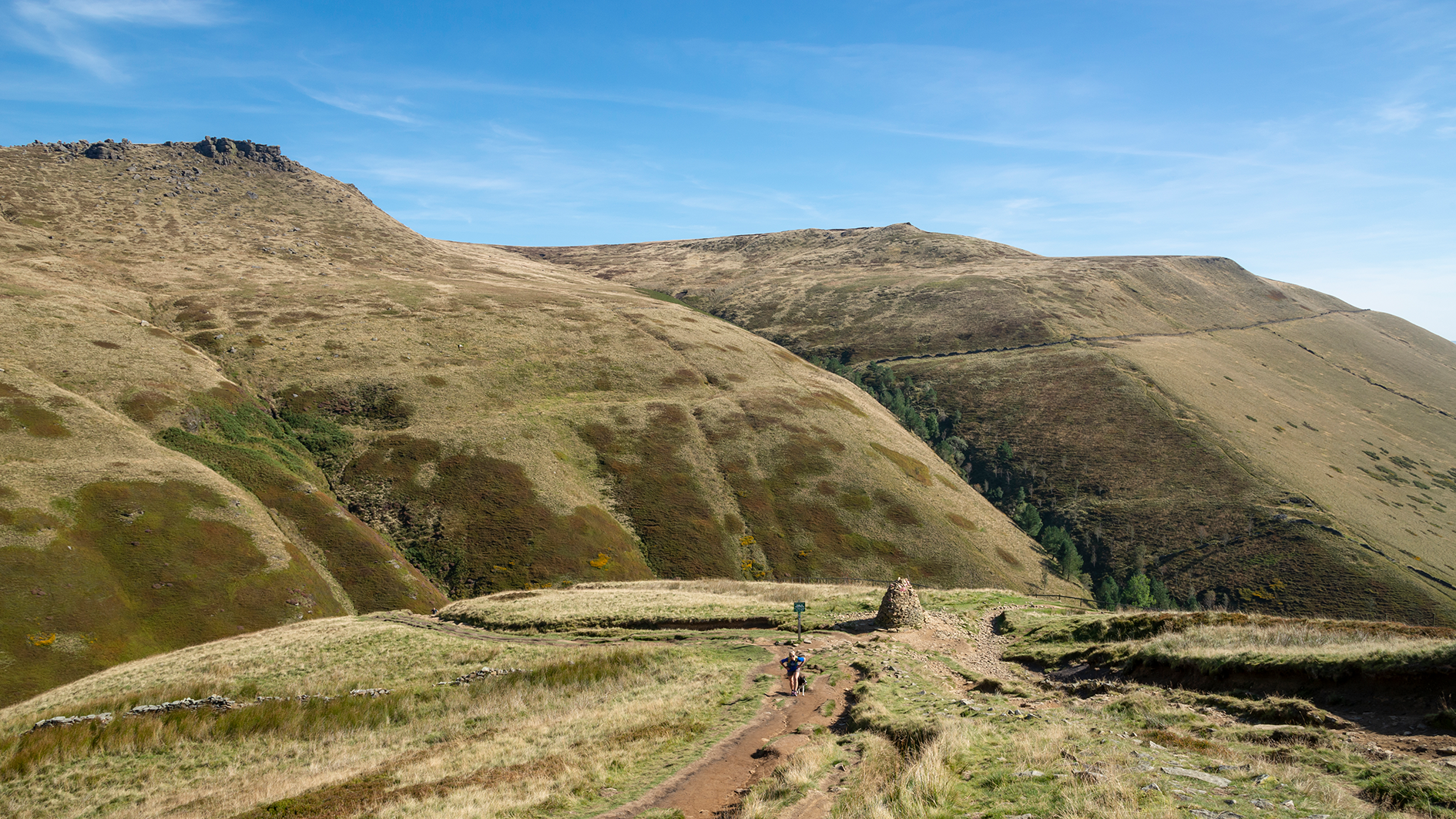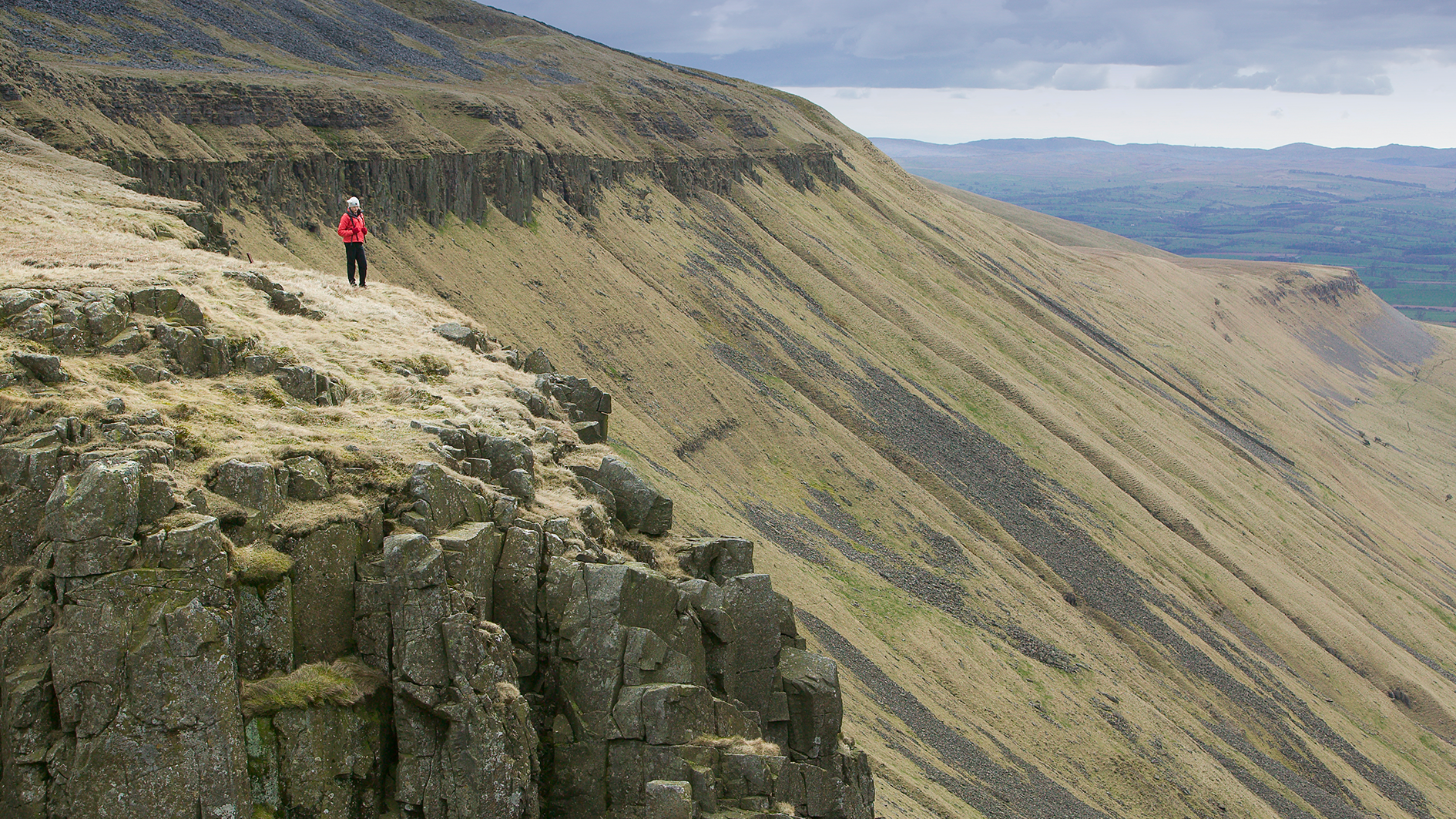Man undertaking a two week hike for charity has to be rescued after injuring himself on the first day
Borders Mountain Rescue saved the injured man who was hurt just hours after setting off on the 268 mile trek

A man who set off on a two week mission to raise money for charity by hiking the famous 268 mile Pennine Way had to be rescued just hours later after injuring himself.
The hiker, who hasn't been named, had made it a mile past the high point of Windy Gyle from his start point at Kirk Yetholm in Derbyshire's Peak District when the accident happened - a trek that takes about 11 hours.
The man, who had rolled his ankle on uneven ground while carrying a heavy backpack and heard an "audible crack", knew straight away that he needed immediate emergency assistance. Two vehicles from the Borders Mountain Rescue Unit were soon dispatched and helped the man to safety.
Stretching between the Scottish border town of Kirk Yetholm and Edale in Derbyshire, the Pennine Way is a hotspot for hikers and trail runners alike, with more than 150,000 people tackling the trail each year. Usually taking two to three weeks to complete, the trail guides trekkers through stunning valleys in the Yorkshire Dales and Derbyshire Peak District across to the North Pennines and ancient Hadrian’s Wall.
Considered to be one of the toughest routes in Britain, the Pennine Way includes some tricky terrain, uneven paths and boggy wetland. The trail is especially awkward in the darker winter months, with poor visibility and unreliable ground increasing the likelihood of accidents.
The rescued man’s injury “can happen to anyone,” Borders Search and Rescue volunteer Damon Rodwell told the BBC, after the man was rescued last weekend.
“As soon as he knew he was in trouble, he did exactly the right thing,” he continued.
All the latest inspiration, tips and guides to help you plan your next Advnture!
“He called 999, asked for police, mountain rescue, erected his tent and made himself as comfortable as possible.”

Winter hiking advice
If you’re thinking of heading out for a chilly winter hike, there are a number of things to consider first.
What to wear
Ensure you’re prepared by wearing warm winter clothing and appropriate footwear. Layer up with lightweight, insulating clothes that can be easily removed when you work up a sweat.
Winter hiking boots are different to their warm-weather counterparts, often featuring enlarged lugs to maximise traction and thick waterproof materials to keep your feet dry. If you’re taking on especially snowy conditions, consider wearing Yaktrax, Microspikes or even crampons for extra traction.
How to prepare
Before hitting the trails, get ready by checking the weather forecast and stocking up on essential supplies. It’s imperative that you're ready for whatever winter conditions you’ll face, so make sure to have enough food and water to carry you through the duration. Emergency equipment is also invaluable - a good flashlight or first aid kit could prove life-saving in the event of an emergency, and won’t take up too much space.
Handling an emergency
Before heading out, make sure you have some way of calling for help should calamity strike. Although this can be done through a mobile phone, other methods are often preferable. Satellite communicators like the Garmin InReach Messenger Plus don’t require any phone signal, allowing you to send an SOS in remote backcountry locations.
In September, a Canadian hiker who’d been mauled by a bear was rescued by emergency services after using his Garmin InReach to call for help. In total, more than 10,000 people have received emergency help through Garmin’s SOS system.
For more advice on winter hiking safety, check out our top 10 winter hiking safety tips.
- The best winter hiking boots 2024 for unbeatable performance in the cold
- The best hiking boots 2024 keep your feet warm, dry and protected with our top choices

Will Symons developed his love of the outdoors as a student, exploring every inch of Sussex’s South Downs national park and swimming off the Brighton seafront. Now a staff writer for Advnture, Will previously worked as a freelance journalist and writer, covering everything from cricket to ancient history. Like most Advnture staff, Will’s free time is rarely spent indoors, he can often be found hiking, open water swimming or playing cricket.
